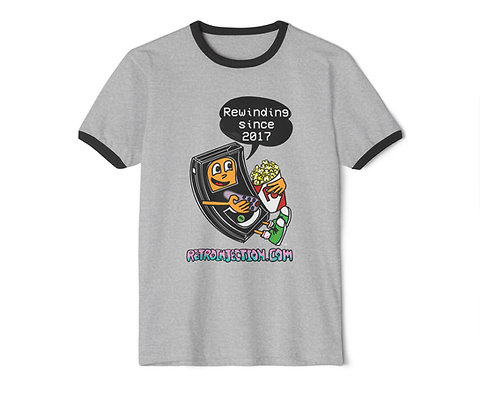Tiger Handheld LCD Videogames: You Know You Had One.
- Dave

- Jun 7, 2018
- 7 min read
Updated: Aug 22, 2022

Before everyone over the age of five hours had a smartphone, portable entertainment was a luxury. Long car rides, waiting for the dentist and visits with extended family could spell pure torment to kids in the '80s. Thankfully, it wouldn't be long until readily-available, portable video games would hit the scene. These titles used a technology called liquid crystal display, more commonly known as LCD. Originally designed for use in pocket calculators, Nintendo was the corporation to first capitalize on LCD with their Game and Watch line. Released in 1980 in Japan, the Game and Watch series (so titled due to the inclusion of a digital clock in the game), would be virtually unknown in the United States for many years. No, America would be crowning its own LCD king.

It's likely many kids today wouldn't recognize an LCD videogame. I grew up with this technology, and vividly recall the days of playing simple black-and-white games on minuscule screens. In 1989, just prior to the landmark release of the Game Boy, LCD games were all the rage. (At least they were with the kids in my school. Your sphere of reference was much more localized before the Internet!)
The company synonymous with LCD handhelds in North America was none other than Tiger Electronics. Millions of '80s kids grew up playing Tiger games. Also known for Lazer Tag and the infamous Furby, Tiger made a booming business converting everything under the sun into a handheld title. Even rapper M.C. Hammer got the LCD treatment:

Of course, Tiger also did its own takes of established arcade titles. I remember seeing the Tiger version of Atari's Gauntlet in a Family Toy Warehouse (Pittsburgh's local version of Toys "R" Us). Even home console games, such as Mega Man 2 and Simon's Quest, made the miniaturized jump. Although lesser known, Tiger made some really cool tabletop versions of the established Sega coin-op hits Out Run and After Burner:

Tiger was bought out by toy giant Hasbro in 1998, and according to Wikipedia was defunct as of 2012. But based on the Internet chatter I saw when researching this article, it's safe to say the company is fondly remembered. To give you a scope of how prolific Tiger truly was, here's a twenty-minute video of its LCD game commercials! Check out the :13 mark for what appears to be a thinly-disguised Asteroids arcade game. You can spot the above tabletop units at 1:10. Sure, these things were pretty much regular handheld titles encased in huge chunks of plastic, but I remember wanting the After Burner like there was no tomorrow. It seemed in my young mind to be more like a legitimate arcade cabinet. If you pause the video at 1:25, the kid looks like he's going to hurl! The game must have been realistic to the point of inducing air sickness. At least he's wearing Chuck Taylors (1:30), so he's able to retain some level of coolness.
You may have noticed the gameplay footage on all of these commercials is cut very quickly. I'm sure that Tiger was aware the animation abilities of its chosen format were limited at best. This is where we face the harsh reality: LCD games, even at their most popular, were simply "better than nothing." With ever-improving handheld consoles such as the Sega Game Gear and Nintendo's Game Boy Color, the LCD medium was on borrowed time very quickly. Its main saving grace became its lower price point versus its interchangeable-cartridge competitors. To stay relevant, Tiger ended up branching out with toys such as the reintroduction of the 1978 2XL Robot toy in 1992 and 1997's Giga Pets.
Also in 1997, Tiger debuted its own interchangeable cartridge handheld system, the Game[dot]com. An innovative concept with its touchscreen, stylus and ability to connect to the Internet via an optional modem, the system was not a commercial success, selling only 300,000 units. Its tepid reception was blamed largely on a laggy monochrome display, which made fast-moving games such as Duke Nukem all but unplayable.

Tiger even used its LCD prowess to join forces with its primary portable gaming competitor, Nintendo's Game Boy. It's true: In 1998, Tiger released the Electronic Pokemon Pokedex Organizer.

I have some Tiger games in my collection, which I will share in a moment, but first I want to share with you a piece of my childhood. While not a Tiger release, I felt that it was important enough to beg for inclusion: My first video game ever was the following LCD unit, given to me by my uncle Earl for Christmas 1987. Playtime's Grand Prix has been with me for thirty years. (It was also released by Radio Shack under the name Raceway.)

Uncle Earl would pass away within the year, so this game is really special to me. Unfortunately, the battery compartment cover is missing, making the thing a paperweight. Maybe one day I'll pick up a replacement cover, but I almost prefer it unplayable: I think I'd rather have the memories of playing it as a kid. This toy was instrumental in my life, instilling an enduring love of video games. I used to put Grand Prix in my blanket fort "game rooms." This exact game made me realize at seven years old that I wanted a home arcade when I grew up. (I finally got one, although I arguably never grew up.)
I have no clue what happened to my Tiger Double Dragon game watch, which I bought at Kay-Bee Toys with my own, hard-saved $20.00. I was really proud of that timepiece, and wearing it in forth grade was quite brazen, as LCD games were total contraband. I risked having it taken by a teacher, never to be seen again. I used to sneak in a game or two while standing in line for the classroom's en masse "bathroom break." Again, I don't know exactly where it went, but I dislike authority enough that I'm sure I would have retained it being effectively stolen by school staff. These watches go for a small fortune now:

On the plus side, I still have three of my Tiger handheld titles. And, they all have their battery compartment covers!

Tiger would eventually graft the football and baseball games into an unholy union as Bo Jackson Football/Baseball. (The commercial is at 2:09 in the above video.) I remember this briefly being the "holy grail" of handheld games in my school back in 1990, incredibly edging out the Game Boy for desirability! (I don't think anyone knew it was just a lame repackaging of two unwanted games. In other news: Kids can be dumb.)

Of particular note are Tiger's adaptations of Disney titles, such as Beauty and the Beast and Snow White. Video games appealing specifically to young girls are uncommon even today, so kudos to Tiger for bringing a different offering to the table back in the '90s.

Tiger's Snow White LCD game came with an attached "carry strap," to make the unit a full-fledged fashion accessory!

I picked up this Talking Super Street Fighter II, knowing that it would stink, but not caring because I'm a sucker for anything Street Fighter. It was a rummage sale find, probably fifteen years ago. I think I played it for about eight seconds. Like most of my stuff, I call it a "collection piece" to justify keeping it.

I'm not sure if this is better than Tiger's other Street Fighter II offering, a Rock 'Em Sock 'Em Robots knock-off. In other words, I'm not sure which is worse.
For the sake of completeness, I've included my Virtua Fighter Tiger game, given to me by my late grandmother. I don't like how these games are becoming associated with dead relatives.

And in the general spirit of handheld LCD games, here are my '80s non-Tiger titles. These games have no stated manufacturer, but they're too cool to not showcase!

Space Rescue: I have only a vague recollection of this game. It still has the battery compartment cover; maybe if I get really bored someday, I'll try it out. I believe this unit came from Radio Shack.
Submarine: My Sunday School had a large, cardboard box with the classic pirate's treasure chest motif printed on it. Every week, one of the kids got to take their pick from one on the toys inside. I felt like I had really lucked out to nab this little game, possibly on my birthday. The battery compartment is still covered, so I could theoretically use it, but there's a large piece of debris in the screen. To paraphrase Back to the Future's Marty McFly, that doesn't instill me with a lot of confidence.
In Ghost Catcher, you run around as a guy in overalls, grabbing wayward spirits. I loved playing the part of a low-rent Ghostbuster, although I question the effectiveness of catching ghosts with a net. If I recall correctly, this title started with the electronic strains of some creepy classical music. I remember annoying the maintenance guy at a strip mall with the game, asking him if he wanted to hear something scary. (He did not.) Again, there's no battery compartment cover on this unit.
A lot of these generic titles (including my beloved Grand Prix) had flip-out stands on the back. They displayed better that way, and it helped to accentuate the alarm. Yep, these babies were equipped with a clock, so as not to be outdone by the Nintendo Game and Watch. These no-name games originated in China, where Nintendo had a foothold with their LCD games. Their manufacturers did everything they could to compete with the Big N.

This next unit isn't a game, but a practical joke: When one of the buttons is pressed, the screen shoots a stream of water into the would-be player's face! Another Family Toy Warehouse purchase, this was the hit of second grade in 1988, providing great fun for everyone but the victim. The gag uses the same casing as my Grand Prix handheld. When I was a kid, I was impressed that it was "copied" so well. As I got older and wiser, I realized it was a standard mold, used to cut costs. Depressing.

I hope you got a kick out of revisiting LCD games. This technology has become so disposable that in 2003 and 2004, McDonald's released two different LCD Sonic the Hedgehog Happy Meal promotions. Here are mine, recovered from the recess of the basement. Games always make recess better!

Hasbro bought the Tiger Electronics brand in 1998. In 2020, it re-released some choice LCD games under the branding "From the Vault." I spotted these at a ThinkGeek store. It was great to see LCD games back on the shelves, and at a very reasonable price point!

Advanced technology has become inseparable with life. Growing up in the '80s, kids were on the precipice of a tech avalanche, early enough in the game to be excited about it. I'm thankful that I got to experience something special, as it was happening. Tiger's LCD army is an indelible part of the decade.
Did you have a favorite Tiger or LCD game? Tell us about it in the comment box below!









Comments